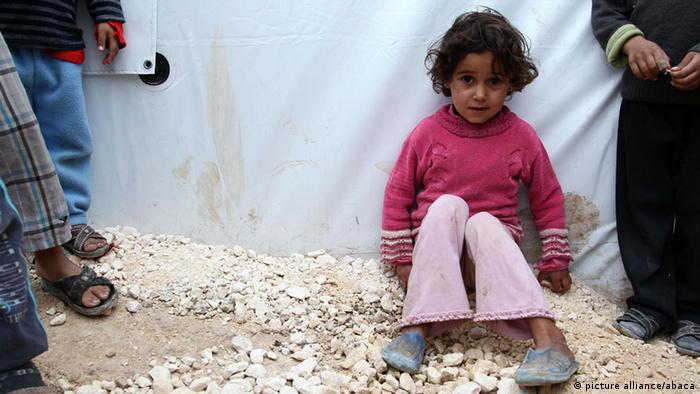Millions of children’s lives saved through low-cost investments
More than 34 million children’s lives have been saved since 2000 because of investments in child health programs at a cost of as little as $4,205 per child, according to a new analysis in The Lancet.
This analysis builds off the work of an international collaboration of researchers and, for the first time, creates a scorecard that allows governments, policymakers, and donors to track investments in child health and to link those investments to child deaths averted across countries in a comparable manner. The article, “Keeping score: fostering accountability for children’s lives,” will be published in The Lancet online on July 2 and in the July 4 print edition.
The leaders of the Institute for Health Metrics and Evaluation (IHME) at the University of Washington and the UN Secretary-General’s Special Envoy for Financing the Health Millennium Development Goals and for Malaria found that from 2000 to 2014, low- and middle-income country governments spent $133 billion on child health, and private and public donors - mostly in high-income countries - spent $73.6 billion.
The governments saved about 20 million children in their own countries, and the donors saved an additional 14 million children. Among donor agencies, some of the largest sources of funding also saved the most lives over the period of 2000 to 2014. The United States government, for example, saved the lives of 3.3 million children under the age of 5. The government of the United Kingdom saved 1.7 million children. And the Bill & Melinda Gates Foundation saved 1.5 million lives, according to the analysis.
Those funders channeled their money through a variety of agencies, which also are reflected in the new scorecard. For example, Gavi saved 2.2 million children’s lives, more than any other funding channel, while USAID, the World Bank, UNICEF, and the Global Fund all saved more than 1 million child lives each.
“You can spend $4,000 on many different things, but there are very few places where the money would deliver the kind of impact you get by investing it in child health,” said Dr. Christopher Murray, IHME Director. “If you invest in the poorest countries, you will see the biggest impact in child health because the costs of things like nutrition programs, vaccines, and primary care are lower.”
 The article’s authors found that to save a child’s life, the average cost is US$4,205 in low-income countries such as Tanzania and Haiti, $6,496 in lower-middle-income countries such as India and Zambia, and $10,016 in upper-middle-income countries such as Botswana and Thailand. Costs generally increase as costs of interventions in countries rise.
The article’s authors found that to save a child’s life, the average cost is US$4,205 in low-income countries such as Tanzania and Haiti, $6,496 in lower-middle-income countries such as India and Zambia, and $10,016 in upper-middle-income countries such as Botswana and Thailand. Costs generally increase as costs of interventions in countries rise.
IHME and the Special Envoy’s office hope that the scorecard will be further developed and updated annually to measure the effects of investments, incentivize progress, and drive innovation to fill gaps in funding or interventions.
“We believe that this scorecard can and should be used after the end of 2015 to aid in tracking progress on the Global Goals for Sustainable Development,” said Ray Chambers, the UN Secretary-General’s Special Envoy for Financing the Health Millennium Development Goals and for Malaria. “We know that despite the efforts of governments and donors to improve health in low-income and middle-income countries, too many children die before the age of 5. Without a way to monitor and publicly share progress regularly, we will miss the opportunity to build on the momentum we have seen since the Millennium Declaration.”
The researchers developed the scorecard in response to the intense measurement needs at the end of the Millennium Development Goal era this year. The Millennium Declaration in 2000 set an ambitious goal of reducing the death rate in children under 5 by two-thirds in each country between 1990 and 2015. Since 2000, 136 of 138 low- and middle-income countries have seen reductions in child mortality, including many who have achieved the two-thirds goal.
But progress in reducing child deaths has been uneven. The authors argue that the scorecard “can be an important tool for fostering accountability and accelerating progress toward the crucial goal of preventing suffering throughout the world.” They see three main ways the scorecard could be used:
Countries that receive development assistance can use the scorecard to focus on the programs that have proven most effective at saving lives or to reorient programs to focus on the most disadvantaged populations.
Donor nations can use the scorecard to take into account how their contributions flow through bilateral and multilateral channels and to identify funding gaps on a country-by-country basis.
For both funding recipients and donors, the scorecard can provide a warning flag to show where child deaths are increasing despite increased spending.
“If spending is going up and child deaths are continuing to rise or staying relatively flat, a country may need policy or technical assistance to diagnose the problem,” Dr. Murray said. “We have seen such incredible success in saving children’s lives over the past 15 years. We need to take what we have learned from that experience and push for more progress and more accountability as we enter the era of the Global Goals for Sustainable Development.”
###
CONTACTS:
William Heisel
Director of Global Engagement
The Institute for Health Metrics and Evaluation (IHME) at the University of Washington
p: +1-206-897-2886
c: +1-206-612-0739
wheisel@uw.edu
Robert Valadéz
Director of Communications
Office of the UN Secretary-General’s Special Envoy for Financing the Health Millennium Development Goals and for Malaria
p: +1-212-218-4196
rvaladez@mdghealthenvoy.org